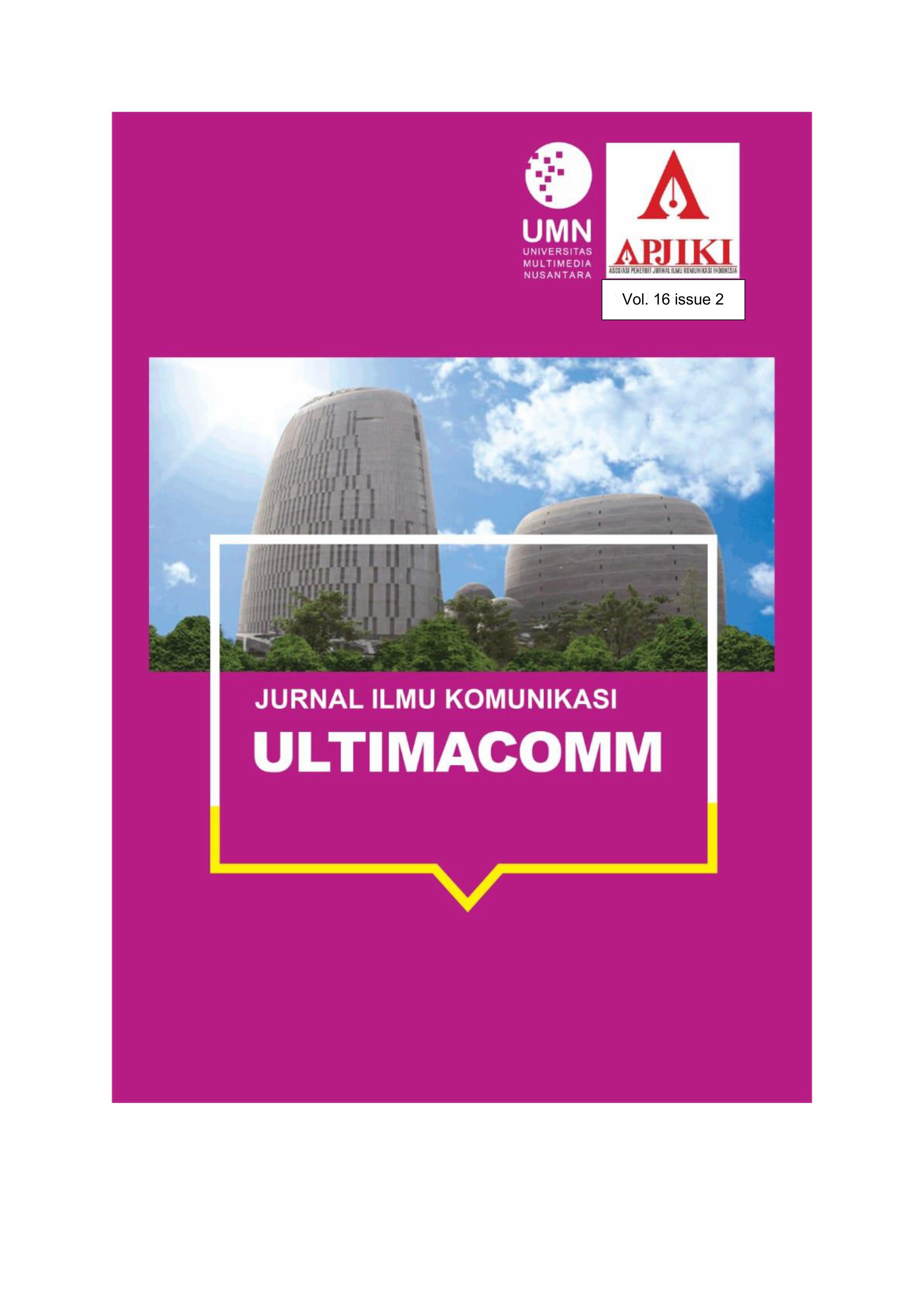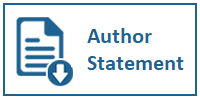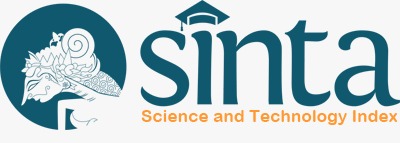The Early Adopter Gets the Worm: Innovation Adoption of AI within a Multinational Agency
Keywords:
Artificial Intelligence, Diffusion of Innovation, Multinational agencyAbstract
Artificial Intelligence (AI) is rapidly advancing in the advertising industry, driving multinational agencies to adopt this innovation. This study explores the adoption of AI in advertising content production, focusing on characteristics and scalability. Everett M. Rogers' Diffusion of Innovation theory serves as the conceptual framework. The research employs a descriptive qualitative approach with a case study method, collecting data through in-depth interviews with creative teams from Dentsu Indonesia, a multinational agency, and analyzing it using pattern matching. The findings reveal that Dentsu Indonesia demonstrates a proactive understanding and attitude toward AI, supported by an innovative organizational culture. The agency provides comprehensive facilities for its creative teams and implements AI in a varied and extensive manner. However, the sustainability of AI adoption faces challenges, including regulations, copyright issues, and ethics. This study offers conceptual insights into AI adoption, providing strategic perspectives for optimizing AI to enhance efficiency and productivity in the advertising industry.
Downloads
References
Anantrasirichai, N., & Bull, D. (2022). Artificial intelligence in the creative industries: a review. Artificial Intelligence Review, 55(1), 589–656. https://doi.org/10.1007/s10462-021-10039-7
B&T Magazine. (2023). The North Face has launched "TNF10000 Reasons to Get to Trail” an AI-generated campaign produced by FRED & FARID Shanghai to entice the Chinese market to get back out into the wilderness.
Chen, H., Chan-Olmsted, S., Kim, J., & Mayor Sanabria, I. (2022). Consumers' perception on artificial intelligence applications in marketing communication. Qualitative Market Research, 25(1), 125–142. https://doi.org/10.1108/QMR-03-2021-0040
Chen, H., Li, L., & Chen, Y. (2021). Explore success factors that impact artificial intelligence adoption on telecom industry in China. Journal of Management Analytics, 8(1), 36–68. https://doi.org/10.1080/23270012.2020.1852895
Chen, Y., Stavropoulou, C., Narasinkan, R., Baker, A., & Scarbrough, H. (2021). Professionals' responses to the introduction of AI innovations in radiology and their implications for future adoption: a qualitative study. BMC Health Services Research, 21(1). https://doi.org/10.1186/s12913-021-06861-y
Clow, K. E., & Baack, D. (2018). Engage, Assess, Apply with MyLabMarketing ®.
Crespin-Mazet, F., Goglio-Primard, K., Havenvid, M. I., & Linné, í…. (2021). The diffusion of innovation in project-based firms – linking the temporary and permanent levels of organisation. Journal of Business and Industrial Marketing, 36(9), 1692–1705. https://doi.org/10.1108/JBIM-01-2020-0066
De Bruyn, A., Viswanathan, V., Beh, Y. S., Brock, J. K. U., & von Wangenheim, F. (2020). Artificial Intelligence and Marketing: Pitfalls and Opportunities. Journal of Interactive Marketing, 51, 91–105. https://doi.org/10.1016/j.intmar.2020.04.007
De Pelsmacker, P. (n.d.). Marketing CoMMuniCations. www.pearson.com/uk
Denzin, N. K., & Lincoln, Y. S. (2018). The SAGE Handbook of Qualitative Research.
Fortune. (2024, March). Dentsu Indonesia Ungkap Manfaat AI untuk Optimalkan Pemasaran . Https://Www.Fortuneidn.Com/Business/Bayu/Dentsu-Indonesia-Sebut-Teknologi-Ai-Bisa-Optimalkan-Pemasaran?Page=all .
Gunkel, D. J. (2025). AI for Communication. https://doi.org/10.1201/9781003442240
Horani, O. M., Al-Adwan, A. S., Yaseen, H., Hmoud, H., Al-Rahmi, W. M., & Alkhalifah, A. (2023). The critical determinants impacting artificial intelligence adoption at the organizational level. Information Development. https://doi.org/10.1177/02666669231166889
IBM. (2024, January). Data Suggests Growth in Enterprise Adoption of AI is Due to Widespread Deployment by Early Adopters, But Barriers Keep 40% in the Exploration and Experimentation Phase.
Ishengoma, F., & John, E. (2024). Factors influencing the adoption of mobile-based AI services in Tanzanian manufacturing SMEs. Vilakshan - XIMB Journal of Management. https://doi.org/10.1108/XJM-11-2023-0214
Jayanthiladevi, A., Raj, A. G., Narmadha, R., Chandran, S., Shaju, S., & Krishna Prasad, K. (2020). AI in Video Analysis, Production and Streaming Delivery. Journal of Physics: Conference Series, 1712(1). https://doi.org/10.1088/1742-6596/1712/1/012014
Jöhnk, J., WeiíŸert, M., & Wyrtki, K. (2021). Ready or Not, AI Comes” An Interview Study of Organizational AI Readiness Factors. Business and Information Systems Engineering, 63(1), 5–20. https://doi.org/10.1007/s12599-020-00676-7
Krishnan, C., & Mariappan, J. (2024). "The AI Revolution in E-Commerce: Personalization and Predictive Analytics.” In Studies in Computational Intelligence (Vol. 1094, pp. 53–64). Springer Science and Business Media Deutschland GmbH. https://doi.org/10.1007/978-3-031-55615-9_4
Kshetri, N. (2024). Generative AI in Advertising. IT Professional, 26(5), 15–19. https://doi.org/10.1109/MITP.2024.3457328
Kumar, D., & Suthar, N. (2024). Ethical and legal challenges of AI in marketing: an exploration of solutions. Journal of Information, Communication and Ethics in Society, 22(1), 124–144. https://doi.org/10.1108/JICES-05-2023-0068
Martinez-Sala, A.-M., Monserrat-Gauchi, J., & Quiles-Soler, C. (2024). Use of Artificial Intelligence Tools in Communication Companies. In Revolutionizing Communication (pp. 102–116). CRC Press. https://doi.org/10.1201/9781003473633-10
Najdawi, A. (2020). Assessing AI Readiness Across Organizations: The Case of UAE.
Prasad Agrawal, K. (2024). Towards Adoption of Generative AI in Organizational Settings. Journal of Computer Information Systems, 64(5), 636–651. https://doi.org/10.1080/08874417.2023.2240744
Promsombut, P., Rungpanya, V., Chumworratayee, K., & Kerdvibulvech, C. (2024). Perspectives on AI artists in generating artwork in advertising industry. International Journal of Information Technology (Singapore). https://doi.org/10.1007/s41870-024-01878-y
Pumplun, L."¯;, Tauchert, C."¯;, & Heidt, M. (2019). A NEW ORGANIZATIONAL CHASSIS FOR ARTIFICIAL INTELLIGENCE - EXPLORING ORGANIZATIONAL READINESS FACTORS. https://aisel.aisnet.org/ecis2019_rp/106
Ratten, V., & Jones, P. (2023). Generative artificial intelligence (ChatGPT): Implications for management educators. International Journal of Management Education, 21(3). https://doi.org/10.1016/j.ijme.2023.100857
Rogers, E. M. (2010). Diffusion of Innovations Fourth Edition.
Rogers, E. M. . (1995). Diffusion of innovations. Free Press.
Salma, B., Fatima, T., Sara, A., & Merieme, B. (2024). Artificial Intelligence in Social Media: From Content Personalization to User Engagement (pp. 45–52). https://doi.org/10.1007/978-3-031-65018-5_5
Singh, S., & Singh, W. (2024). AI-based personality prediction for human well-being from text data: a systematic review. Multimedia Tools and Applications, 83(15), 46325–46368. https://doi.org/10.1007/s11042-023-17282-w
Vimpari, V., Kultima, A., Hämäläinen, P., & Guckelsberger, C. (2023). "an Adapt-or-Die Type of Situation”: Perception, Adoption, and Use of Text-to-Image-Generation AI by Game Industry Professionals. Proceedings of the ACM on Human-Computer Interaction, 7(CHI PLAY), 131–164. https://doi.org/10.1145/3611025
Wang, Y., Pan, Y., Yan, M., Su, Z., & Luan, T. H. (2023). A Survey on ChatGPT: AI-Generated Contents, Challenges, and Solutions. IEEE Open Journal of the Computer Society, 4, 280–302. https://doi.org/10.1109/OJCS.2023.3300321
Yin, R. (2018). Case Study Research and Applications Sixth Edition.
Zhang, Y., & Gosline, R. (2023). Human favoritism, not AI aversion: People's perceptions (and bias) toward generative AI, human experts, and human–GAI collaboration in persuasive content generation. Judgment and Decision Making, 18. https://doi.org/10.1017/JDM.2023.37
Downloads
Published
How to Cite
Issue
Section
License
Copyright (c) 2025 Fazrah Lillah Rizki Heryanda, Dr. Endah Murwani, M. Si., Dr. Nuria Astagini, M. Si.

This work is licensed under a Creative Commons Attribution-NonCommercial-ShareAlike 4.0 International License.
Ultimacomm Jurnal Ilmu Komunikasi allows readers to read, download, copy, distribute, print, search, or link to its articles' full texts and allows readers to use them for any other lawful purpose. The journal allows the author(s) to hold the copyright without restrictions. Finally, the journal allows the author(s) to retain publishing rights without restrictions
1. Authors are allowed to archive their submitted article in an open access repository
2. Authors are allowed to archive the final published article in an open access repository with an acknowledgment of its initial publication in this journal















